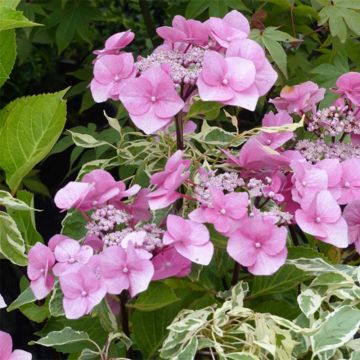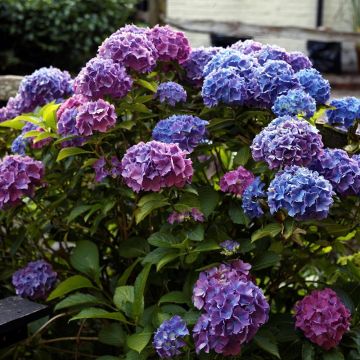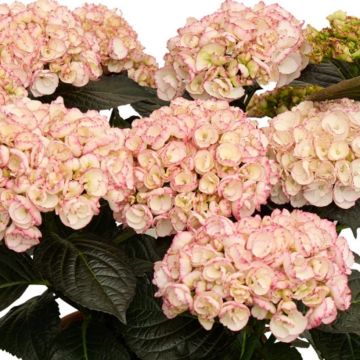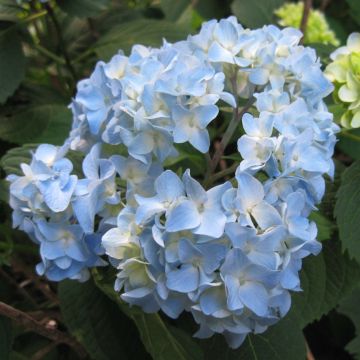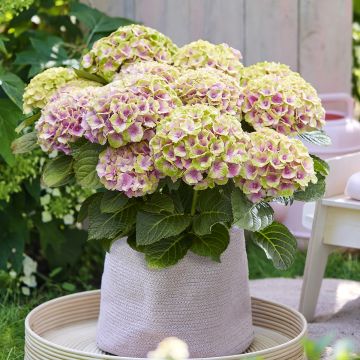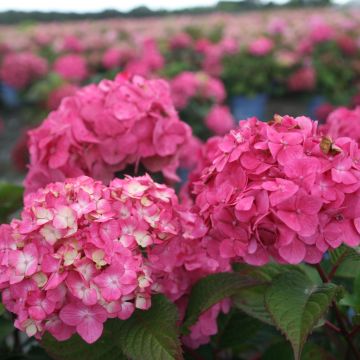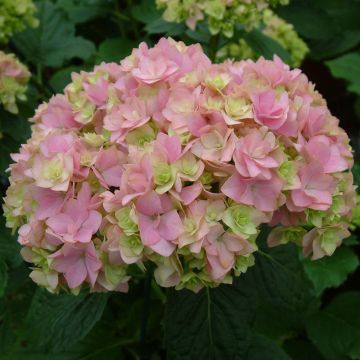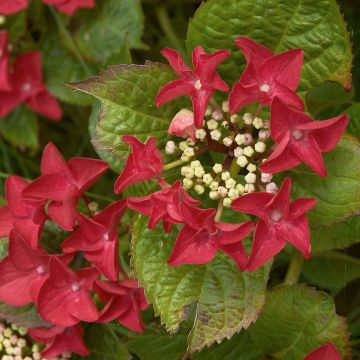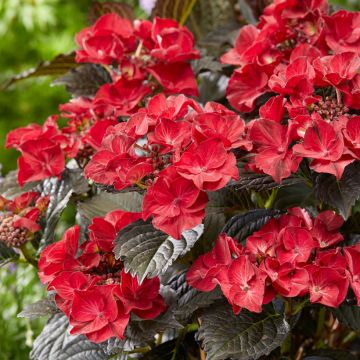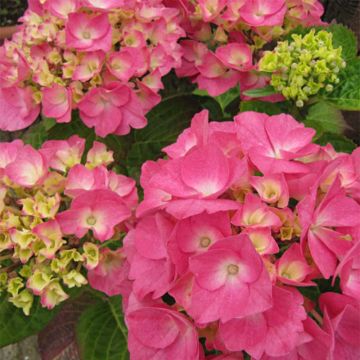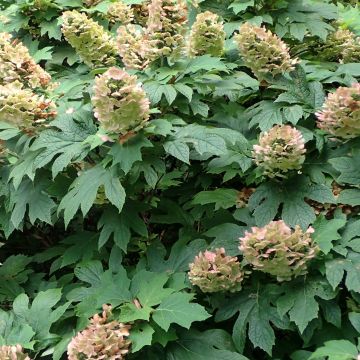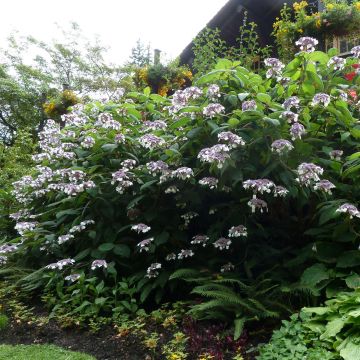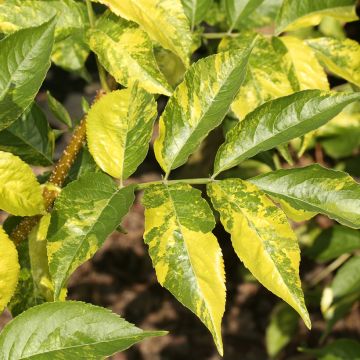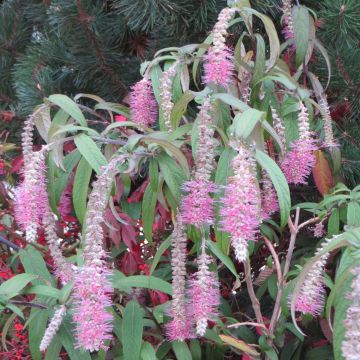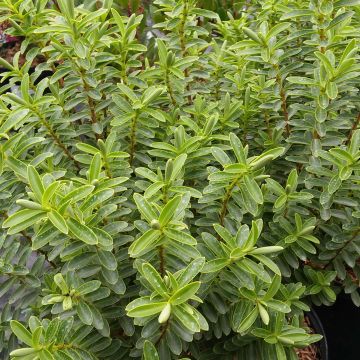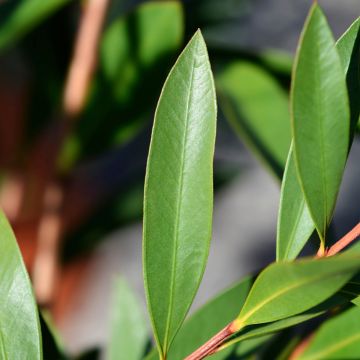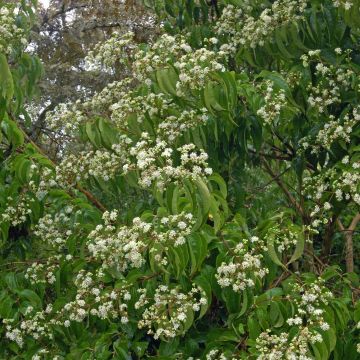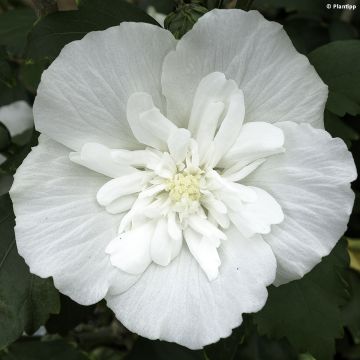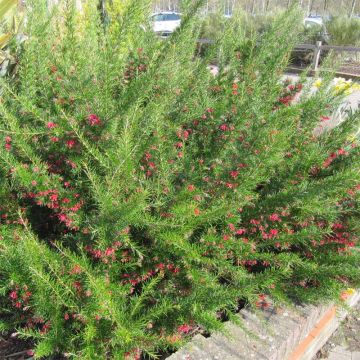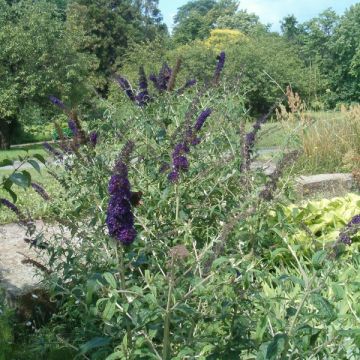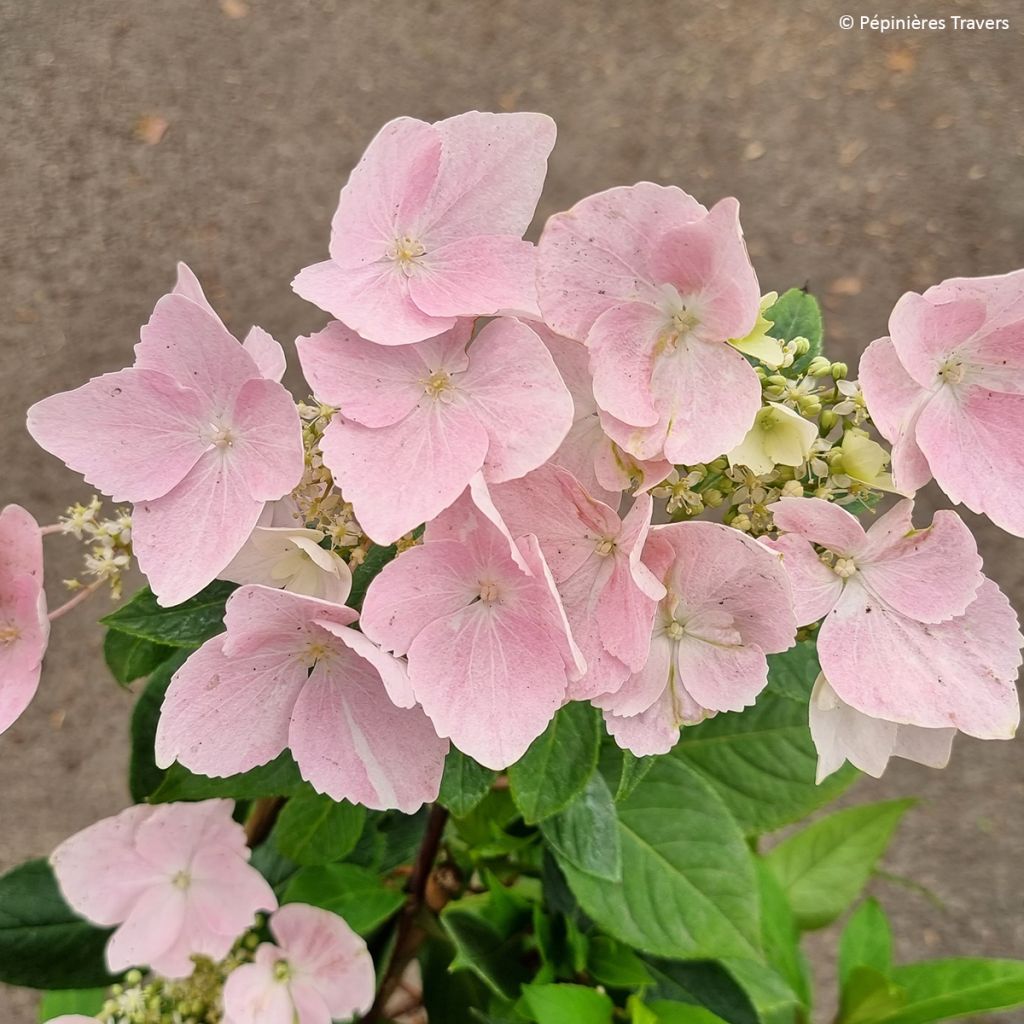

Hydrangea Renaissance
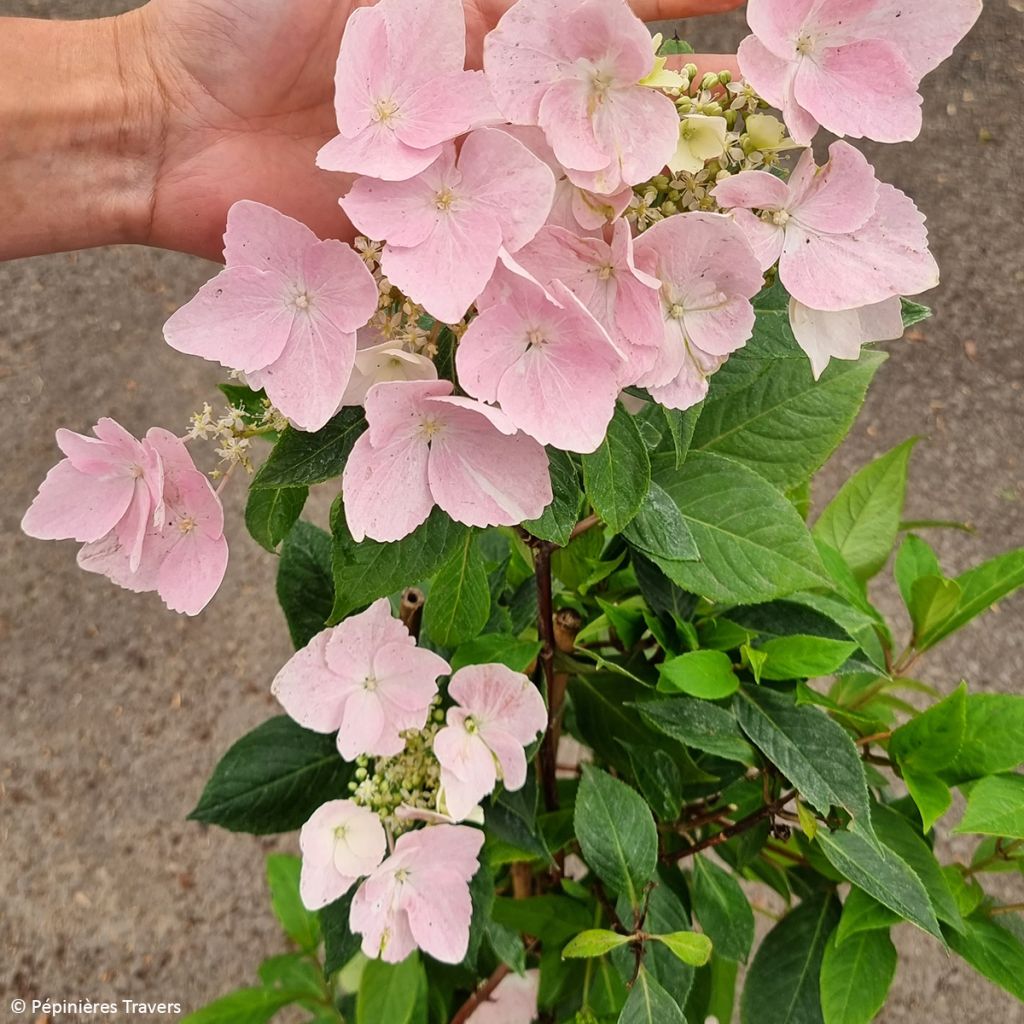

Hydrangea Renaissance
Hydrangea Renaissance
Hydrangea macrophylla (x) scandens Renaissance
Bigleaf Hydrangea, French Hydrangea, Lacecap Hydrangea
This item cannot be shipped to the selected country
Delivery charge from €5.90
Delivery charge from €5.90
More information
Schedule delivery date,
and select date in basket
This plant carries a 24 months recovery warranty
More information
We guarantee the quality of our plants for a full growing cycle, and will replace at our expense any plant that fails to recover under normal climatic and planting conditions.
From €5.90 for pickup delivery and €6.90 for home delivery
Express home delivery from €8.90.
From €5.90 for pickup delivery and €6.90 for home delivery
Express home delivery from €8.90.
Does this plant fit my garden?
Set up your Plantfit profile →
Description
Hydrangea 'Renaissance' is an original and highly ornamental hybrid Hydrangea. Not only is its beautiful foliage a bright green and semi-evergreen to evergreen depending on the climate, but its flowering lasts for over six months of the year! The inflorescences, composed of large sterile florets surrounding small fertile flowers, are pink in slightly alkaline soil or blue in acidic soil. This bush forms a beautiful compact clump and can easily be grown in a container to create a magnificent flowering pot. This is especially necessary in cooler climates, as its hardiness is low, only about -10°C.
Hydrangeas belong to the Hydrangeaceae family, which also includes Deutzias and Philadelphus. Native to temperate Asia and North and South America, Hydrangeas come in the form of bushes, climbing plants, and even small trees, deciduous or evergreen, with approximately seventy species, making it a very diverse genus. Hydrangea Renaissance is a hybrid with its parents being H. macrophylla, probably the most widespread Hydrangea with its typical large flower heads, and H. scandens, much less well known. This Japanese species is semi-evergreen, meaning it retains its foliage in climates that do not experience frost. Renaissance has inherited this characteristic, as well as a low hardiness, which does not exceed -10°C to -12°C for a well-rooted plant. When grown in a pot, its resistance is even lower, limited to -5/-7°C.
With a compact habit, this variety forms a dense and bushy shrub, reaching about 1m in all directions at maturity. Its foliage is intermediate between that of H. macrophylla, with large oval leaves, and that of H. scandens, with narrow and elongated leaves. In Renaissance, the foliage is elliptical, with a pointed tip and slightly toothed edges. It is bright green, lighter or darker depending on the exposure, with visible veins and a slightly glossy and shiny surface. From mid-April, the inflorescences appear, beautifully highlighted by the darker vegetation. They consist of flat heads, formed by small whitish sterile flowers grouped in the centre, surrounded by a few large sterile florets on the periphery. Composed of four petals, they are pinkish-white in slightly alkaline soils (with a pH higher than 6.5), and the more acidic the pH, the bluer they become. The flowering typically starts at the end of the branches, but what is more original is that it continues on the lower levels. This characteristic extends the flowering period until October for plants planted outdoors. In climates where the severity of winter does not allow the cultivation of Renaissance in open ground, the constraint of overwintering becomes an advantage, as if the plant is brought indoors before the first frost, its flowering will be prolonged, sometimes until Christmas! Its foliage will then be evergreen and will not shed like it would outdoors.
As unique as it is ornamental, this Hydrangea garners the admiration of all enthusiasts of the genus, both for its beautiful and romantically charming flowering, and for its duration. Its never-ending flowering makes it a truly attractive shrub that will enliven a plant bed throughout the entire growing season. Plant some Azalea mollis alongside it, the superb deciduous Chinese Azaleas with star-shaped trumpet flowers. In the foreground, place a few specimens of Nandina domestica 'Fire Power', with its very graceful foliage and changing colours throughout the season. Acer palmatum 'Redwine', a small Japanese Maple with sculptural leaves that also change colour throughout the season, culminating in a golden yellow and orange autumnal display, will also be a good companion for your Hydrangea.
Report an error about the product description
Plant habit
Flowering
Foliage
Botanical data
Hydrangea
macrophylla (x) scandens
Renaissance
Hydrangeaceae
Bigleaf Hydrangea, French Hydrangea, Lacecap Hydrangea
Hydrangea x 'Renaissance' cov
Cultivar or hybrid
Other Hydrangea Macrophylla
Planting and care
Plant the 'Renaissance' Hydrangea in spring so that it has time to root before winter, or in early autumn in the mildest climates. A well-rooted plant can withstand -10/-12°C. Choose a semi-shaded location on the edge of trees that will also maintain some atmospheric humidity. This variety does not necessarily require ericaceous soil but appreciates deep, moist, well-drained soil that is fairly fertile, possibly enriched with a good fertiliser before planting. If your soil is dry, incorporate a quantity of well-rotted compost at planting to better retain moisture in the soil. In cold regions, this Hydrangea will need to be planted in a large pot to overwinter it indoors as soon as temperatures approach -3/-4°C. If kept frost-free, its flowering will be prolonged and in the best cases can stretch until Christmas!
Planting period
Intended location
Care
This item has not been reviewed yet - be the first to leave a review about it.
Summer-flowering shrubs
Haven't found what you were looking for?
Hardiness is the lowest winter temperature a plant can endure without suffering serious damage or even dying. However, hardiness is affected by location (a sheltered area, such as a patio), protection (winter cover) and soil type (hardiness is improved by well-drained soil).

Photo Sharing Terms & Conditions
In order to encourage gardeners to interact and share their experiences, Promesse de fleurs offers various media enabling content to be uploaded onto its Site - in particular via the ‘Photo sharing’ module.
The User agrees to refrain from:
- Posting any content that is illegal, prejudicial, insulting, racist, inciteful to hatred, revisionist, contrary to public decency, that infringes on privacy or on the privacy rights of third parties, in particular the publicity rights of persons and goods, intellectual property rights, or the right to privacy.
- Submitting content on behalf of a third party;
- Impersonate the identity of a third party and/or publish any personal information about a third party;
In general, the User undertakes to refrain from any unethical behaviour.
All Content (in particular text, comments, files, images, photos, videos, creative works, etc.), which may be subject to property or intellectual property rights, image or other private rights, shall remain the property of the User, subject to the limited rights granted by the terms of the licence granted by Promesse de fleurs as stated below. Users are at liberty to publish or not to publish such Content on the Site, notably via the ‘Photo Sharing’ facility, and accept that this Content shall be made public and freely accessible, notably on the Internet.
Users further acknowledge, undertake to have ,and guarantee that they hold all necessary rights and permissions to publish such material on the Site, in particular with regard to the legislation in force pertaining to any privacy, property, intellectual property, image, or contractual rights, or rights of any other nature. By publishing such Content on the Site, Users acknowledge accepting full liability as publishers of the Content within the meaning of the law, and grant Promesse de fleurs, free of charge, an inclusive, worldwide licence for the said Content for the entire duration of its publication, including all reproduction, representation, up/downloading, displaying, performing, transmission, and storage rights.
Users also grant permission for their name to be linked to the Content and accept that this link may not always be made available.
By engaging in posting material, Users consent to their Content becoming automatically accessible on the Internet, in particular on other sites and/or blogs and/or web pages of the Promesse de fleurs site, including in particular social pages and the Promesse de fleurs catalogue.
Users may secure the removal of entrusted content free of charge by issuing a simple request via our contact form.
The flowering period indicated on our website applies to countries and regions located in USDA zone 8 (France, the United Kingdom, Ireland, the Netherlands, etc.)
It will vary according to where you live:
- In zones 9 to 10 (Italy, Spain, Greece, etc.), flowering will occur about 2 to 4 weeks earlier.
- In zones 6 to 7 (Germany, Poland, Slovenia, and lower mountainous regions), flowering will be delayed by 2 to 3 weeks.
- In zone 5 (Central Europe, Scandinavia), blooming will be delayed by 3 to 5 weeks.
In temperate climates, pruning of spring-flowering shrubs (forsythia, spireas, etc.) should be done just after flowering.
Pruning of summer-flowering shrubs (Indian Lilac, Perovskia, etc.) can be done in winter or spring.
In cold regions as well as with frost-sensitive plants, avoid pruning too early when severe frosts may still occur.
The planting period indicated on our website applies to countries and regions located in USDA zone 8 (France, United Kingdom, Ireland, Netherlands).
It will vary according to where you live:
- In Mediterranean zones (Marseille, Madrid, Milan, etc.), autumn and winter are the best planting periods.
- In continental zones (Strasbourg, Munich, Vienna, etc.), delay planting by 2 to 3 weeks in spring and bring it forward by 2 to 4 weeks in autumn.
- In mountainous regions (the Alps, Pyrenees, Carpathians, etc.), it is best to plant in late spring (May-June) or late summer (August-September).
The harvesting period indicated on our website applies to countries and regions in USDA zone 8 (France, England, Ireland, the Netherlands).
In colder areas (Scandinavia, Poland, Austria...) fruit and vegetable harvests are likely to be delayed by 3-4 weeks.
In warmer areas (Italy, Spain, Greece, etc.), harvesting will probably take place earlier, depending on weather conditions.
The sowing periods indicated on our website apply to countries and regions within USDA Zone 8 (France, UK, Ireland, Netherlands).
In colder areas (Scandinavia, Poland, Austria...), delay any outdoor sowing by 3-4 weeks, or sow under glass.
In warmer climes (Italy, Spain, Greece, etc.), bring outdoor sowing forward by a few weeks.

































